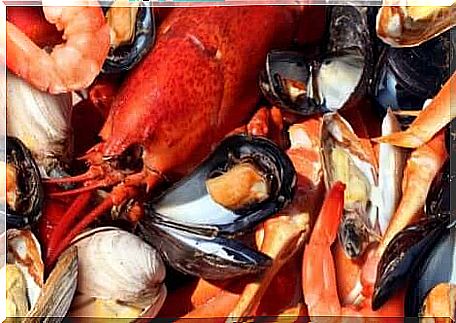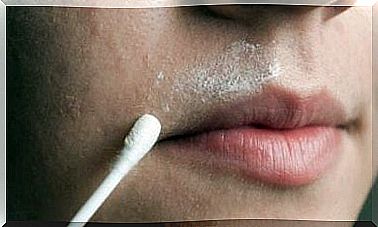Shellfish Allergies: Symptoms And Treatments

Shellfish allergies are one of the most common types of allergies. Molluscs and crustaceans can easily cause the immune system to jump into high gear to fight the allergen, resulting in mild to severe reactions. Severe allergic reactions can be extremely dangerous. Therefore, it is important to understand the symptoms to avoid major complications.
When a substance enters the body, the immune system decides whether it needs to fight it or let it through. In the case of shellfish allergies, the immune system identifies the protein as harmful and reacts to protect the body. Sometimes these reactions can develop in such a serious way that they are potentially life-threatening.
What are shellfish allergies?
As described by a study in Current Opinion in Allergy and Clinical Immunology , shellfish allergies are caused by specific proteins found in certain types of seafood. The most common allergy-producing seafood is crustaceans and molluscs.
When the body detects an allergen, it triggers a defensive reaction that can result in mild symptoms such as hives or mild swelling, or more severe symptoms such as anaphylaxis.
A family history of shellfish allergies is one of the biggest risk factors for a person potentially developing the allergy. In addition, this type of allergy is more common in adults than in children, although it can appear at any stage of life. Furthermore, shellfish sensitivity is more common in women than in men.

What are the symptoms?
As we have mentioned before, allergy symptoms can be mild or severe. In general, the first signs of an allergic reaction appear about an hour after eating shellfish. Typical signs are swelling and itching of the lips and / or tongue.
In more severe cases, you may have difficulty breathing or present bowel problems, such as diarrhea, abdominal pain and vomiting. This type of reaction usually requires medication and the intake of probiotics, which have been shown to control persistent diarrhea.
Other symptoms such as dizziness and fainting or loss of consciousness may also occur. If any of these signs appear, consult a doctor to monitor your progress and take medication, if necessary.
Anaphylaxis
Shellfish allergy can lead to anaphylaxis, a life-threatening side effect that requires immediate medical attention. In fact, epinephrine adrenaline injections are the first and basic line of treatment, as confirmed by a study published in the Journal of Pediatrics.
Symptoms of anaphylaxis include difficulty breathing from swelling in the throat, drop in blood pressure, confusion, dizziness, fainting or loss of consciousness.
What are the possible complications of shellfish allergies?
There are certain pre-existing conditions that can dramatically worsen a person’s susceptibility to anaphylactic shock. For example, if a person has asthma, a family history of anaphylaxis caused by food allergies, or a personal history of allergic reactions to shellfish, there is a high probability that hypersensitivity may be complicated.
It is therefore extremely important to carefully review the labels of all the foods you buy. This way you can ensure that there is no cross-contamination or trace of food that can trigger an allergic reaction.
If you have a severe shellfish allergy, you should even stay away from all places seafood and shellfish are treated and prepared. The odors or odors that shellfish emit can trigger side effects.
How to treat shellfish allergies?
At the moment, there is no foolproof cure for shellfish allergies. This food allergy is a process that, when it occurs, is likely to last for the rest of your life.
Consequently, the only thing you can really do is try to avoid ingesting shellfish and accidentally inhaling the smell. Of course, this only applies if you already have a confirmed shellfish allergy.
If you go to a restaurant, check to confirm that the menu has an allergen chart or label. By using this you will be able to see which dishes contain shellfish and which do not.
Read food labels carefully to confirm that the food was not packaged or processed at a seafood processing plant. It is highly likely that if it did, the food would contain traces of shellfish, which can be dangerous.
Shellfish allergies in children
As we have already mentioned, it is more common to develop a shellfish allergy in adulthood than in childhood, although the latter is certainly possible. If you notice any adverse reaction in your child after eating shellfish, we recommend that you carry an EpiPen in an emergency. This can save the baby’s life by preventing anaphylactic shock.
Parents and guardians should be very careful to make sure that the child does not eat shellfish or food that is contaminated with the allergen. However, if the child shows symptoms of hypersensitivity such as swelling, itching or inflammation of the mouth for the first time, it is best to take a trip to the emergency room.
How to prevent allergic reactions?
If you or your child have a shellfish allergy, you can follow these helpful tips to prevent potential exposure.
Read food labels
Make sure all the foods you buy from the grocery store are free of allergens by reading the food labels. This way you can avoid problems in the long run.
Be careful when eating out
These days, restaurant menus usually have a section that highlights potential allergens in the dishes. However, it is always a good idea to tell the waiter about your allergy so that they can take the right precautions to avoid cross-contamination of foods.

Cross-contamination
People with food allergies may have a reaction by eating food prepared on a contaminated plate or with the same utensil. In other words, you do not need to ingest shellfish to get a reaction or anaphylaxis. It is enough to eat food that touched the same surface as shellfish, and that is why hygiene is extremely important.
Shellfish allergies are a food-related problem
As you have learned, shellfish allergies can be life threatening if a person does not take precautions. Therefore, it is always important to read food labels and seek immediate medical attention if you think you have an allergic reaction.
If your fears are confirmed, remember to always have an EpiPen in case you need to use it one day. This is also important for parents and guardians of children with a shellfish allergy, who must take special precautions to ensure that the child stays away from possible allergens.









